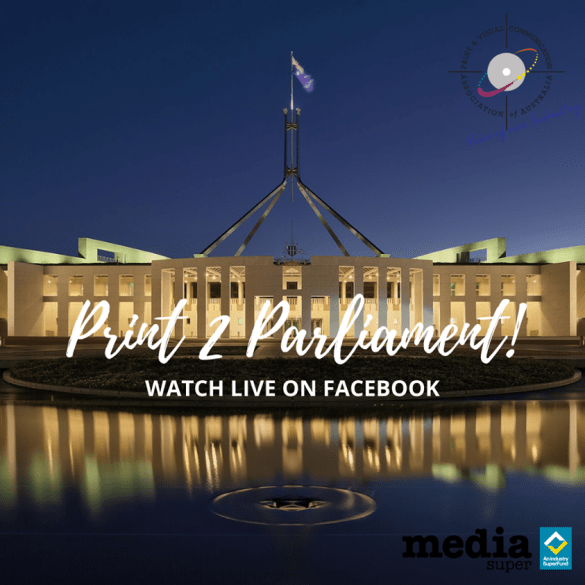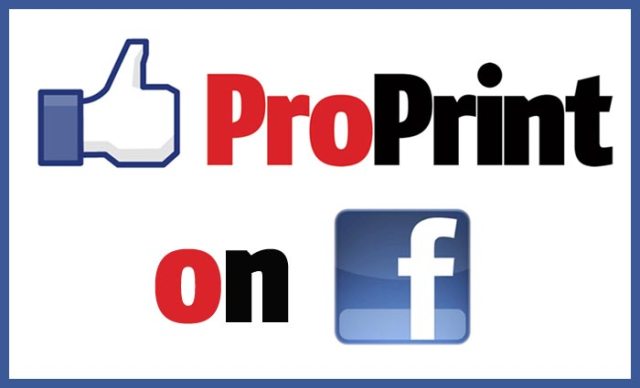
The Print & Visual Communication Association (PVCA) has again hosted its annual Print2Parliament event with the federal Communications Minister Paul Fletcher, Opposition Finance Minister Jim Chalmers and One Nation Senator Pauline Hanson taking part.
The event was livestreamed on Facebook and covered key issues including reliable and affordable energy, government print procurement, Australia Post, how best to attract young people into the industry and why there needs to be more focus from government on keeping print onshore.
PVCA president Walter Kuhn was also in attendance and announced that his tenure with the association is soon to be up with elections for the board coming up.
The gold medal winning works of the National Print Awards were also on display.
Affordable energy
When asked about how to ensure the print industry reliable and affordable energy, Minister Fletcher pointed to the recent $2.5 billion Budget investment as the answer.
“I’m pleased to be joining this virtual version of your annual Print2Parliament event,” Fletcher said.
“Yours is a very important sector in Australia, so it is very timely to be speaking to you especially after the Budget. Energy and gas is important as a cost input to business and when it comes to gas, gas is a physical input into many businesses.
“The $2.5b for the energy sector is designed to deliver lower energy prices by focussing on transmission of energy to get it to end users including businesses.”
Impact International managing director Aleks Lajovic, who powers his Sydney factory with an onsite solar farm, appeared on video and said fair pricing and a reliable supply of energy is critical for business success.
“It’s very difficult to provide certainty of price from our suppliers,” Lajovic said.
“As printers and manufacturers, we are big consumers of energy and it is something we cannot run our business without. If we don’t have good forward contracts and surety than our business is at risk.”
Apprentice subsidies
One Nation MP Pauline Hanson was particularly interested in the discussion around apprentices and how best to attract high school leavers into the print industry, rather than send them on a path to university which may not always be what they want or the best option.
She did point out that each time the federal government offers subsidies for apprentice wages, the schemes are quickly taken up. The latest offer in the Budget is to pay for 50 per cent of an apprentice wage and she said this should go some way to helping encourage businesses to take them on.
But it seems actually getting them interested in print may be more the issue.
Print & Visual Communication CEO Andrew Macaulay said the printing industry needs to be part of the conversation in high schools through the vocational education and training system.
“Print is not on the radar for school children, yet it is the springboard to the very rapid take-up of technical skills,” Macaulay said.
“It’s about promoting print through the school system which the federal government does have an influence on.
“It’s a consistent approach to taking on and keeping on apprentices so that small business can bear the cost of the employee for the first period of time. It’s ensuring that the ongoing training, essential upgrade of skills is funded and supported.”
Proudly Printed in Australia campaign
This year the PVCA has been running a petition to bring print fully back onshore, pointing out that $300m of work for government departments is currently being sent to China.
Macaulay said this represents a significant loss in GST revenue for the government and also costs the Australian economy 1200 jobs.
Minister Fletcher discussed this issue, which is a key one for many printers, at length.
He said the federal government is constantly needing to balance gaining the best value with taxpayers money while also having a diversity of supply.
“These issues about procurement always involve a weighing up of different factors,” Fletcher said.
“One is obviously Australian suppliers and jobs and tax paid onshore and the other factor is value for money for the taxpayer and then having a diversity of supply.
“We take a whole of government view of these things and certainly the finance minister is a strong advocate for getting the best possible price for taxpayers. These are issues that again we see across the economy.
“What we want to see is Australian businesses winning Australian government work on the basis of quality, customer knowledge and on the basis of competitive price and we want to work with you to support you in the things you need to win on those grounds.
“We think that is the best way to support industries. If we can support you so that you are cost competitive what that also means is it maximises your competitive in export markets.
“It’s not an effective long term strategy to say we are going to have government purchase products on the domestic market at whatever price, it’s a small market and you end up with a non-competitive industry globally so we want to see the printing industry and the visual communications industry winning business on the basis of quality of work, knowledge of what our needs are and being price competitive.”
Chalmers said Labor, under leader Anthony Albanese, is trying to apply a system that examines the total economic value of procurement decisions.
He said this view goes broader than a basic cost/benefit analysis but looks beyond that to how will this contract help create local jobs and offer a future for young people, apprentices and trainees.
“I think at the moment when job opportunities are not thick on the ground, we need to get maximum advantage out of the money that government spends on goods and services,” Chalmers said.
“Anthony Albanese talks about a future made in Australia and how to get maximum advantage out of local jobs and apprenticeships and trainees. We are conscious that when it comes to govt procurement we haven’t been doing as well as we can. We could do much better.
“There are tests of economic value. We need to think about economic value more broadly. What does it mean for the labour force in Australia, the training and what does it mean for people? We take that broader view beyond the narrow version of cost benefit analysis.”
Australia Post
The thorny issue of Australia Post was also covered.
Minister Fletcher pointed to a strong drop in mail volumes and a dramatic rise in parcels as why Australia Post is turning its focus to parcel delivery.
He also said perhaps a good question to ask is what more can done to stimulate the market – to make businesses want to use print to effectively market themselves rather than use all their advertising spend on online, tv or radio channels.
“The issue is also about what can be done by Australia Post and the major users of Australia Post to deliver things like catalogues and other marketing materials and so on,” Fletcher said.
“Are there ways to stimulate this market? I think the answer to that lies with the expertise of your sector. The clients for whom marketing material is being produced are obviously weighing up their spend – some go to catalogues and direct mail and some go to digital or tv or radio advertising.
“I think Australia Post will be very receptive to anything that suggests clever new ways to use that physical channel to get compelling content to Australian consumers and Australian households because we’ve got a very big infrastructure there and a lot of people walking the streets and vans around the country for a host of reasons we would like to see that being used as extensively as possible.”
A full transcript of the interviews with each of the guests of the event will be available on the PVCA’s website next week.
The event was supported by Media Super.
Comment below to have your say on this story.
If you have a news story or tip-off, get in touch at editorial@sprinter.com.au.
Sign up to the Sprinter newsletter




What a load of rubbish from the Minister. Australia Post is widely known to be looking to get out of UMS delivery within the next 2 years. He knows it. Their staff are telling mailing houses.
The board and leadership of Australia Post doesn’t want to be in mail, they want to be couriers.
For him to say Australia Post is “very receptive to anything that suggests clever new ways to use that physical channel to get compelling content to Australian consumers and Australian households because we’ve got a very big infrastructure there and a lot of people walking the streets and vans around the country for a host of reasons we would like to see that being used as extensively as possible” is just a lie.